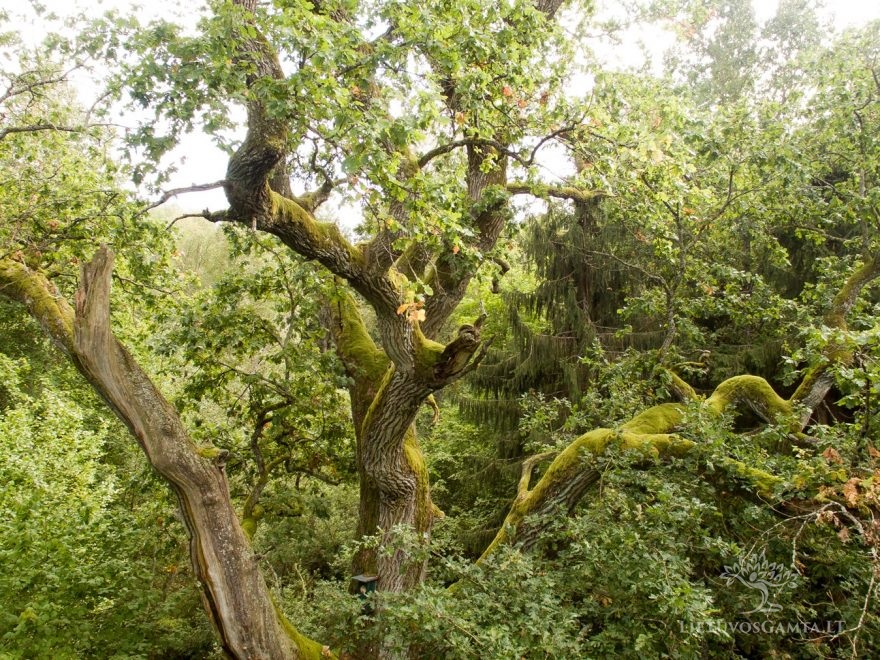The Fir-Tree – the Old Wife
What about you, a little fir-tree
About you, a little daughter of woods,
You, who are swaying around
And singing to us,
You are growing and growing
Green and green in front of our eyes…
The fir-tree growing in Žematija National Park, Jerumbavičinė Forest has bumps of exclusive appearance. One bump of 1 metre diameter stretches over two thirds of the fir-tree trunk. On the other side – another bump. It covers 0.6 sq. m of the trunk area. It is thought that due to these bumps, the fir-tree was named the Old Wife.
A fir-tree as a symbol of matriarchate was adored since the ancient times. Once upon a time, there was a famine, and one woman suffered especially, because she was not able to feed her children, and she became a fir-tree. She became a fir-tree because was wearing a course headkerchief. In ancient times, a cart with a bride was decorated with fir-tree branches. In the 18th– beginning of the 20th centuries, crosses and monuments made from fir-trees were placed on the graves of women.
In legends, the fir-trees were considered sacred trees, even the thunder passed them. No devil goes to hide under fir branches, because they grow like crosses. Fir-trees with bumps or intergrown branches have special power. In old times and later, people used to go and say prayers by the fir-trees when they wanted to heal some body defects. Ethnographers know that the old and the young used to go to it and donate their headkerchiefs or straps, some their clothes or money, because they were sure that if anybody was paralyzed or having a fracture, he must crawl between those branches and then would be healed.
You can see the fir-tree, which received a woman’s nickname, Eglė Boba, together with its bumps of exclusive appearance, in Plungė District, Jerumbavičinė forest.







































































